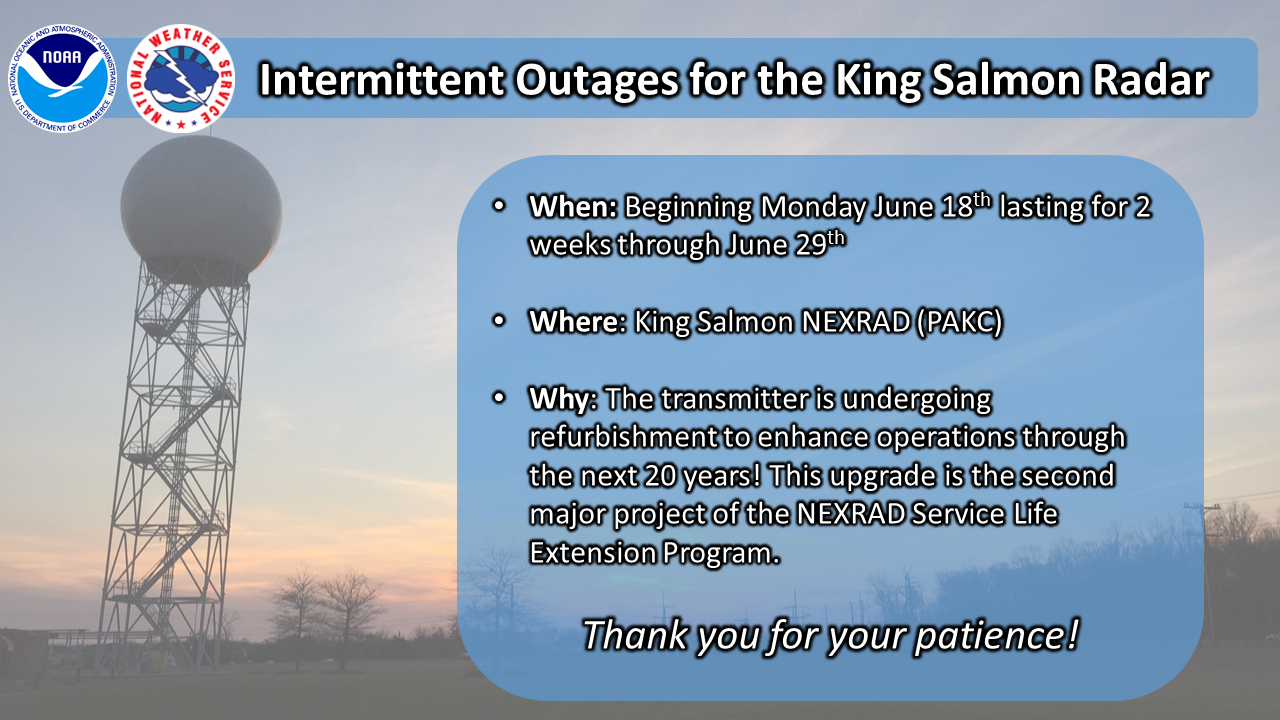Anchorage, AK
Weather Forecast Office

This article is from June 2018 and is no longer valid: Beginning June 18, the PAKC (King Salmon) WSR-88D radar operated by the NOAA National Weather Service in Anchorage, Alaska will experience intermittent outages during the next two weeks for the refurbishment of the transmitter. Although the form, fit, and function of the transmitter will remain the same, old breakers and cables original to the radar will be replaced with modern fuses and new cables. This will help keep the 20-year-old radar operating smoothly for another 20 years.
This transmitter update is the second major project of the NEXRAD Service Life Extension Program, a series of upgrades and replacements that will keep our nation’s radars viable into the 2030’s. NOAA National Weather Service, the United States Air Force, and the Federal Aviation Administration are investing $150 million in the seven year program. The first project was the installation of the new signal processor. The two remaining projects are the refurbishment of the pedestal and equipment shelters. The Service Life Extension Program will complete in 2022.
We apologize for the lack of radar data during the downtime.
The PAKC WSR-88D is part of a network of 159 operational radars. The Radar Operations Center in Norman, Oklahoma, provides lifecycle management and support for all WSR-88Ds.
US Dept of Commerce
National Oceanic and Atmospheric Administration
National Weather Service
Anchorage, AK
6930 Sand Lake Road
Anchorage, AK 99502
907-266-5105
Comments? Questions? Please Contact Us.

